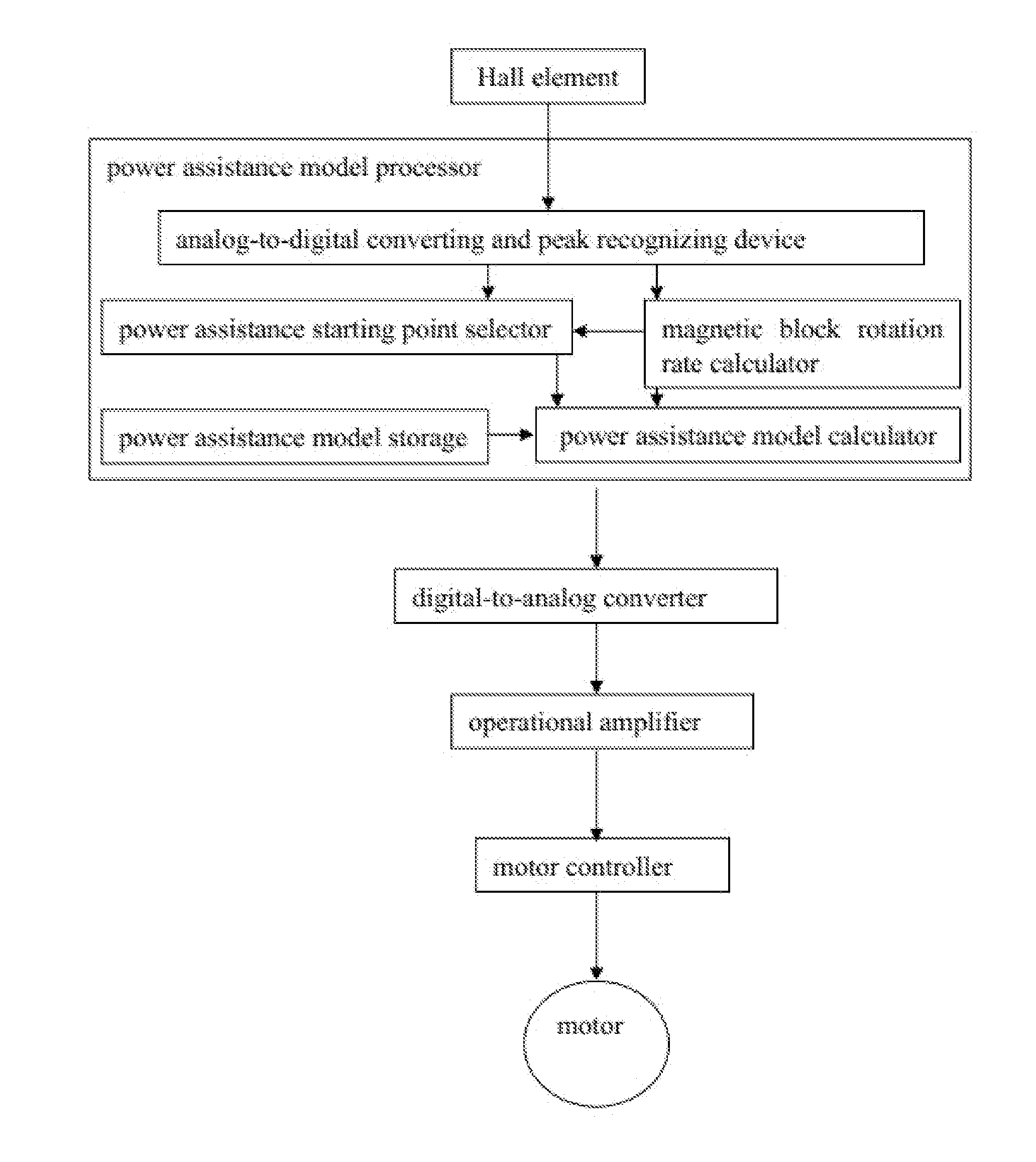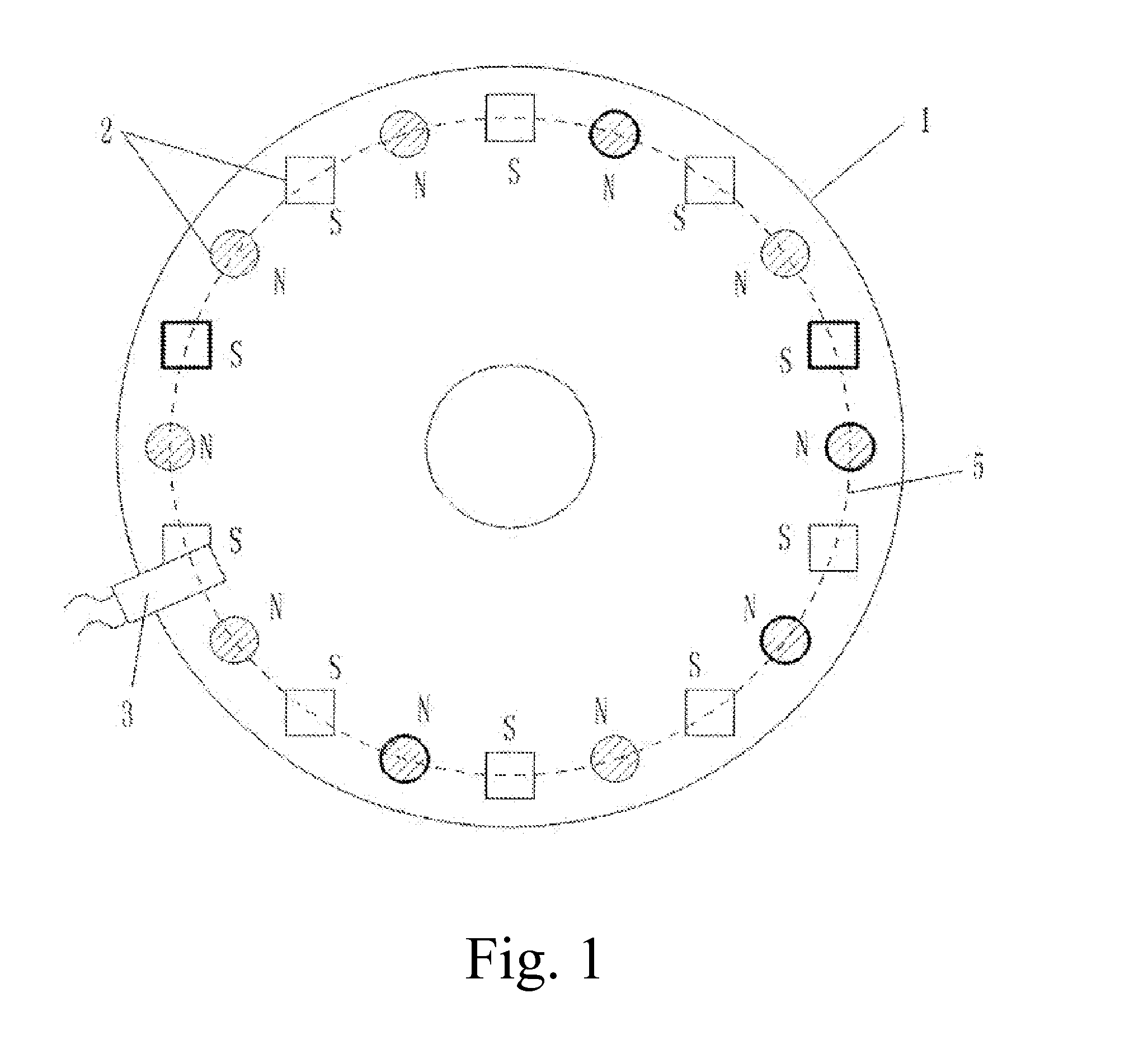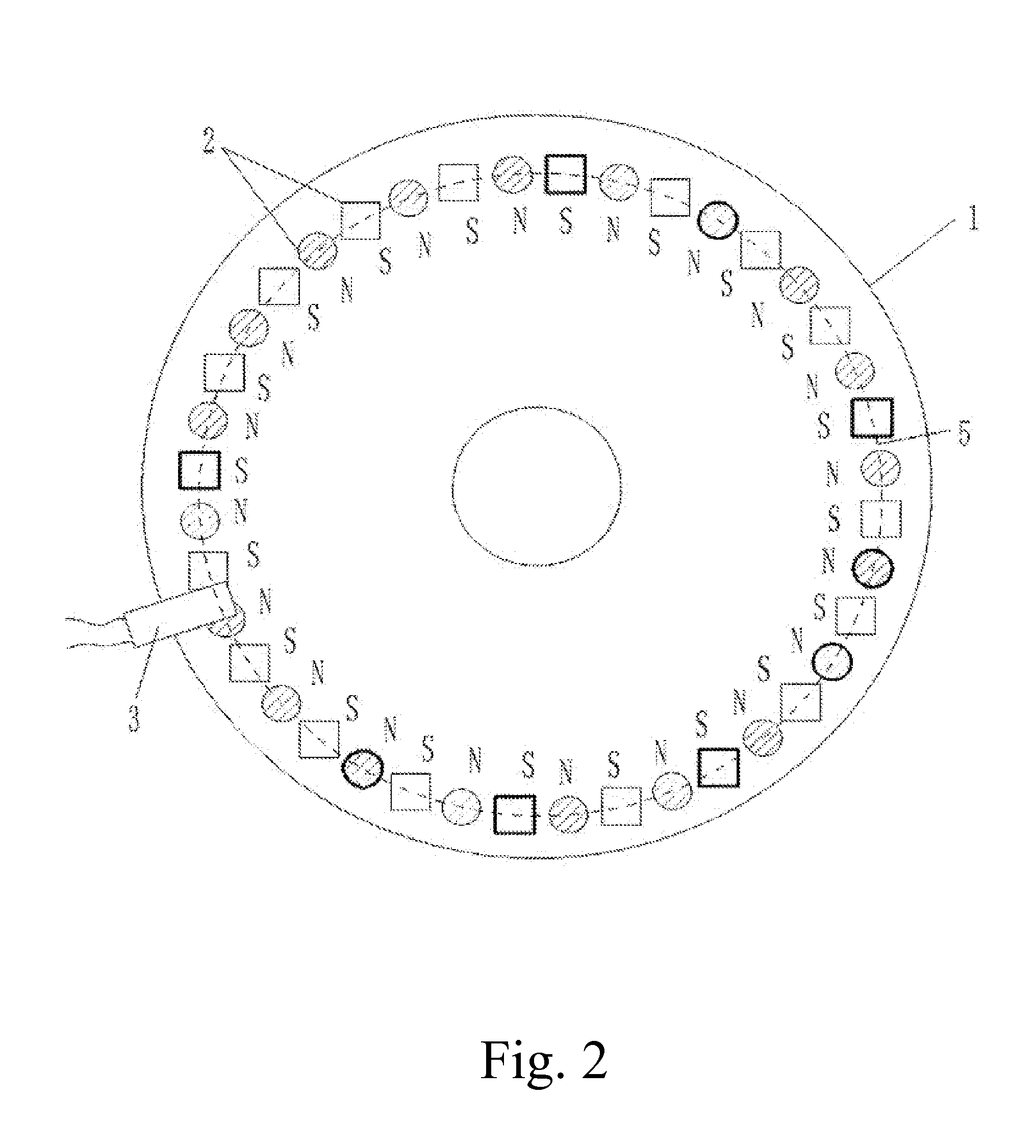Sensor having multiple magnetic blocks of unevenly distributed magnetic fluxes in housing
- Summary
- Abstract
- Description
- Claims
- Application Information
AI Technical Summary
Benefits of technology
Problems solved by technology
Method used
Image
Examples
example 1
A Sensor Having Multiple Magnetic Blocks of Unevenly Distributed Magnetic Fluxes in a Housing
[0126]Referring to FIGS. 1, 3 and 4 of the drawings, the sensor according to this embodiment comprises a sensing element, a power assistance model processor 21, a digital-to-analog converter 27, and an operational amplifier 28 connected in sequence.
[0127][1] The sensing element is adapted for transforming rotational motions of an annular-groove rotating disk 1 to rectangular wave output signals;
[0128]a concave of the annular-groove rotating disk 1 is opposite to that of the annular-groove fixing disk 40, the annular-groove rotating disk 1 and the annular-groove fixing disk 40 have a certain size such that the annular-groove fixing disk 40 is engaged with an annular groove of the annular-groove rotating disk 1 to form a fitting interior-empty housing in which two disks are capable of relatively rotating with each other, the concave of the annular-groove rotating disk 1 and that of the annular...
example 2
A Sensor Having Multiple Magnetic Blocks of Unevenly Distributed Magnetic Fluxes with High Density in a Housing
[0144]Referring to FIGS. 2, 3 and 4, a surface diameter of the annular-groove rotating disk 1 within the hollow ring 41 is 10.0 cm. Forty permanent magnetic blocks 2, each of which has a diameter of 0.6 cm and a magnetic flux selected from a range of 146-279 (B·H)max / KJ·m−3, are arranged on the annular-groove rotating disk 1, and the magnetic fluxes of adjacent permanent magnetic blocks 2 are different. A distance between the Hall element 3 and each of the rotating permanent magnetic blocks 2 is kept to 0.2 cm, such that when each of the rotating permanent magnetic blocks 2 passes through the Hall element 3, the Hall element 3 is capable of generating a corresponding rectangular wave electrical signal for outputting. The structures of the annular-groove rotating disk 1, the permanent magnetic blocks 2 and the Hall element 3 are same as those in Example 1.
example 3
A Sensor Having Multiple Magnetic Blocks of Unevenly Distributed Magnetic Fluxes with Concrete Circuits in a Housing
[0145]Referring to FIGS. 1, 3 and 5, the sensor according to the Example 3 comprises a sensing element, a power assistance model processor 21, a digital-to-analog converter 27 and an operational amplifier 28 connected in sequence.
[0146][1] The Hall element 3 is UGN3075; other elements and the structures thereof in the sensing element are same as those in Example 1.
[0147][2] The power assistance model processor 21 selects the single chip microcomputer 31 to complete all functions, the single chip microcomputer 31 is AT89S52, that is to say, that the single chip microcomputer 31 AT89S52 completes all functions of the analog-to-digital converting and wave peak recognizing device 22, the power assistance starting point selector 23, the magnetic block rotation rate calculator 24, the power assistance model storage 25 and the power assistance model calculator 26.
[0148][3] Th...
PUM
 Login to View More
Login to View More Abstract
Description
Claims
Application Information
 Login to View More
Login to View More - R&D
- Intellectual Property
- Life Sciences
- Materials
- Tech Scout
- Unparalleled Data Quality
- Higher Quality Content
- 60% Fewer Hallucinations
Browse by: Latest US Patents, China's latest patents, Technical Efficacy Thesaurus, Application Domain, Technology Topic, Popular Technical Reports.
© 2025 PatSnap. All rights reserved.Legal|Privacy policy|Modern Slavery Act Transparency Statement|Sitemap|About US| Contact US: help@patsnap.com



